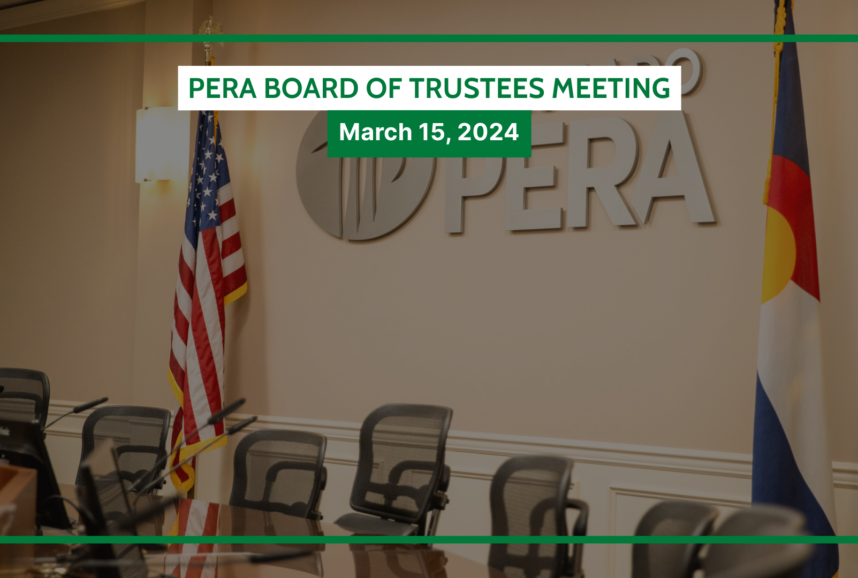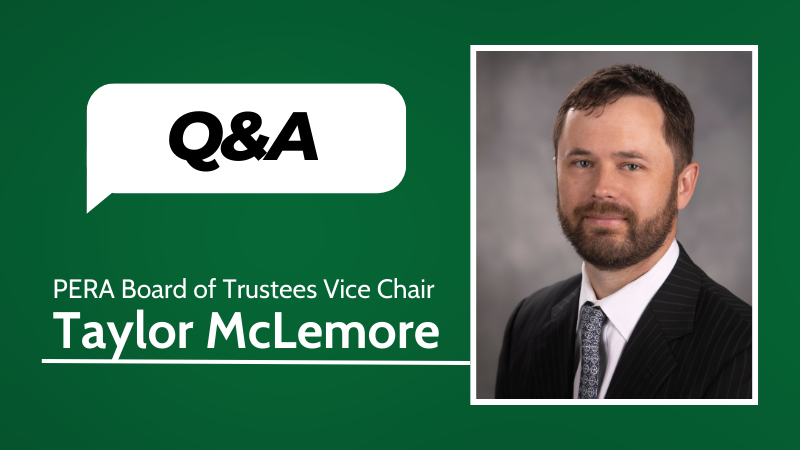Recent attention on the strong investment performance of public pension plans has generated questions for Colorado PERA about its own rate of investment return. This post will address those questions to make sure the public can make an accurate assessment of PERA’s investment program.
- Timing matters. It is very important when considering investment performance that similar time frames are being compared. Many public pensions report financial performance on fiscal years that end on June 30. Others, such as PERA, use the calendar year-end date of December 31 to report returns. Different timeframes will certainly lead to differences in investment performance because the market can deliver dramatically different results from one month to the next. Comparing plans with different reporting timeframes is akin to comparing the weather in December to the weather in July.
- Allocation matters. Each pension has its own investment strategy, which is reflected in the asset allocation or percentage of the total fund dedicated to various investment classes. asset allocation may differ from plan to plan depending on factors such as overall risk tolerance, liability structure, or state laws. The PERA Board of Trustees determines the strategic asset allocation for PERA’s investment portfolio. Over time, the Board’s strategy and allocation have generated returns that have landed PERA in the top quartile of investment performance over the last 10 years (as of December 31, 2016) when compared with peer investors. In years when the global equity market is up, those investment programs with a large stake in that asset class might show a stronger performance. As a long-term investor, PERA has the responsibility to look at the long-term and not try to time the market.
- Understanding these differences matters. These are differences with significant distinction. Certainly, it can be tempting to draw conclusions based on headlines or topline information – pension plans are complicated creatures. But, in the case of billion-dollar investment portfolios, the details matter. In the same way a smart traveler wouldn’t plan a ski trip at the beach in July, it is important to pay attention to what is happening and when – or risk some serious confusion when you show up with skis to build your sand castle.
Colorado PERA 2016 Comprehensive Annual Financial Report
Colorado PERA Statement of Investment Policy
Global equityA type of investment that includes publicly traded stocks in companies based in the United States and abroad.Asset allocationAn investor’s mix of stocks, bonds, and other investments. PERA’s strategic asset allocation is set by the PERA Board of Trustees.Asset allocationAn investor’s mix of stocks, bonds, and other investments. PERA’s strategic asset allocation is set by the PERA Board of Trustees.Asset classA category of similar investments. Common asset classes include global equity (such as publicly traded stocks), real estate, and cash.





There are still a few unanswered questions… (that’s rhetorical, I really don’t want a reply, but feel free to clarify for the other members…):
–
1.) Why do larger funds (e.g., calpers) with a June 30th report ending date manage to report in a couple of weeks while PERA takes half a year!
–
2.) Why is such a big deal made of the “Great Recession” (of a decade ago!) for fund solvency if timing the market is not how pension funds work, and all the losses have been recouped and then some (did PERA miss a buying opportunity)?
–
3.) Why is PERA making such a big deal of so-called future shared sacrifice posturing… JUST TELL US WHAT YOU’RE PROPOSING!
Mr. Santo,
Thank you for your questions.
1. PERA waits for all of the investments to be audited before releasing official return information. Some plans report with lagging returns for privately held investments like real estate and private equity, but PERA waits for the complete information.
2. The loss of 26 percent in value that occurred in 2008 was a big deal, and liabilities were not reduced during this time frame. You’ll recall that the trusts were projected to run out of money in as few as 20 years. That was a situation that PERA had never before experienced.
3. It is anticipated that the Board of Trustees will finalize a recommendation for the General Assembly’s consideration at their September meeting. If this does not happen, a special meeting in October may be scheduled. Details of the proposal will be widely shared via telephone town halls, in person meetings around the state, in our publications, and on our websites (copera.org, peraontheissues.com, and PERAtour.org).
When will they (prospective recommendations) projected to be completed and will you solicit member input prior to submitting to the General Assembly?
Hello Robert,
It is anticipated that the Board of Trustees will finalize a recommendation for the General Assembly’s consideration at their September meeting. If this does not happen, a special meeting in October may be scheduled. Details of the proposal will be widely shared via telephone town halls, in person meetings around the state, in our publications, and on our websites (copera.org, peraontheissues.com, and PERAtour.org).
So much of this seems like rationalization for poor decisions. If returns are disappointing now during the best environment for investment and profit, what will happen when the economy goes south, as it inevitably will? What will be the story line then? And why should we expect a more solvent financial situation? “Something is rotten in the state of Denmark.”
Mr. Simon,
PERA’s investment information is audited and disclosed in the CAFR. PERA’s $48 billion investment portfolio contains non-publicly traded investments like real estate and private equity, so it takes a while for these valuations to be determined and audited. The calendar year 2017 investment return information will be available in June.
PERA does not seek to time the market and makes investments with a long time horizon in mind, as is appropriate for an institutional investor whose sole mission is to promote the long-term financial security for the PERA membership while maintaining the stability of the fund.